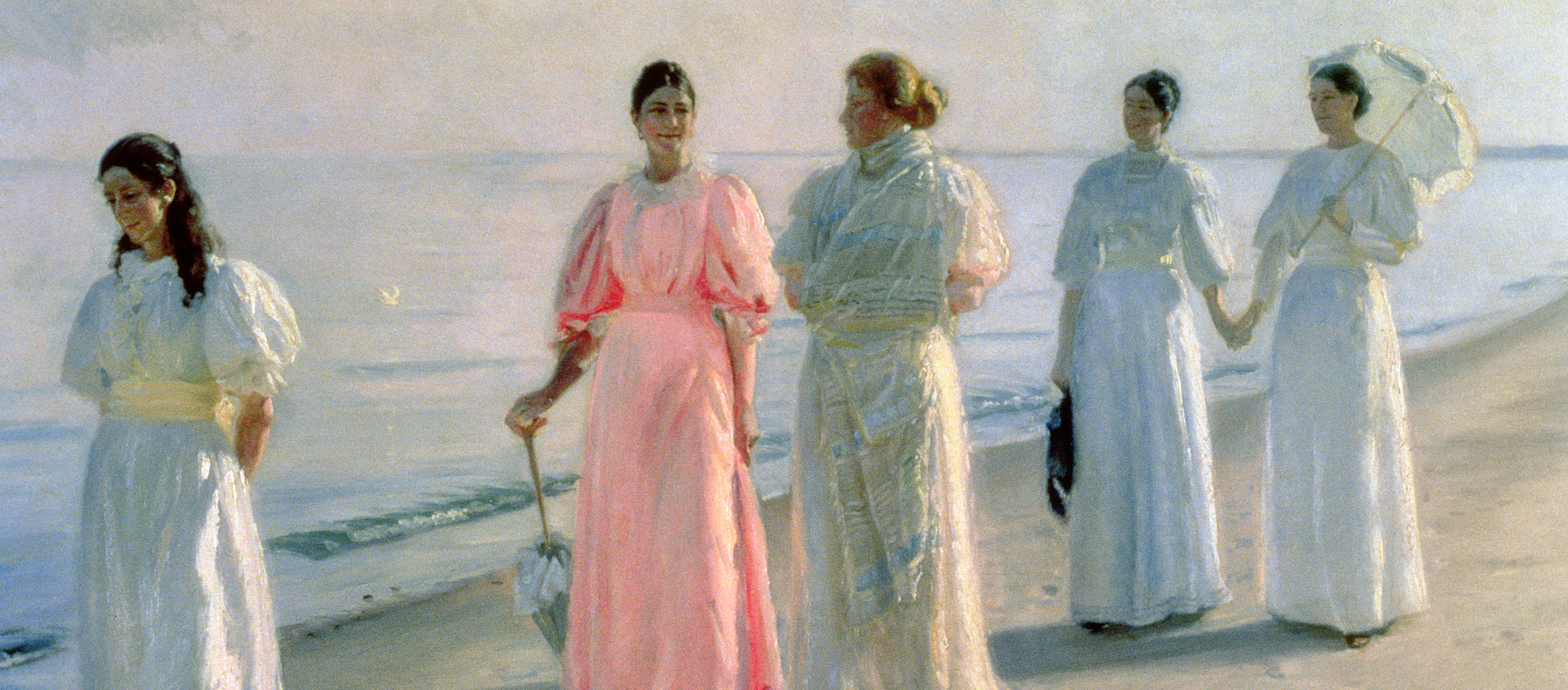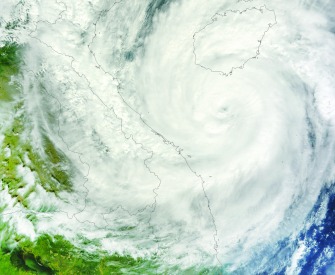Three or four miles south of Lowestoft, the coastline curves gently into the land. From the footpath that runs along the grassy dunes and low cliffs, one can see, at any time of the day or night and at any time of the year, as I have often found, all manner of tentlike shelters made of poles and cordage, sailcloth and oilskin, along the pebble beach. They are strung out in a long line on the margin of the sea, at regular intervals. It is as if the last stragglers of some nomadic people had settled there, at the outermost limit of the earth, in expectation of the miracle longed for since time immemorial, the miracle which would justify all their erstwhile privations and wanderings.
In reality, however, these men camping out under the heavens have not traversed faraway lands and deserts to reach this strand. Rather, they are from the immediate neighborhood and have long been in the habit of fishing there and gazing out to the sea as it changes before their eyes. Curious to tell, their number almost always remains more or less the same. If one strikes camp, another soon takes his place; so that over the years, or so it appears, this company of fishermen dozing by day and waking by night never changes, and indeed may go back further than memory can reach. They say it is rare for any of the fishermen to establish contact with his neighbor, for although they all look eastward and see both the dusk and the dawn coming up over the horizon, and although they are all moved, I imagine, by the same unfathomable feelings, each of them is nonetheless quite alone and dependent on no one but himself and the few items of equipment he has with him, such as a penknife, a thermos flask, or the little transistor radio that gives forth a scarcely audible, scratchy sound, as if the pebbles being dragged back by the waves were talking to each other. I do not believe that these men sit by the sea all day and all night so as not to miss the time when the whiting pass, the flounder rise, or the cod come into the shallower waters, as they claim. They just want to be in a place where they have the world behind them, and before them nothing but emptiness. The fact is that today it is almost impossible to catch anything fishing from the beach. The boats in which the fishermen once put out from the shore have vanished, now that fishing no longer affords a living, and the fishermen themselves are dying out. No one is interested in their legacy. Here and there one comes across abandoned boats that are falling apart, and the cables with which they were once hauled ashore are rusting in the salt air. Out on the high seas the fishing continues, at least for the present, though even there the catches are growing smaller, quite apart from the fact that the fish that are landed are often useless for anything but fish meal. Every year the rivers bear thousands of tons of mercury, cadmium, and lead, and mountains of fertilizer and pesticides, out into the North Sea. A substantial proportion of the heavy metals and other toxic substances sink into the waters of the Dogger Bank, where a third of the fish are now born with strange deformities and excrescences. Time and again, off the coast, rafts of poisonous algae are sighted covering many square miles and reaching thirty feet into the deep, in which the creatures of the sea die in shoals. In some of the rarer varieties of plaice, crucian, or bream, the females, in a bizarre mutation, are increasingly developing male sexual organs and the ritual patterns of courtship are now no more than a dance of death, the exact opposite of the notion of the wondrous increase and perpetuation of life with which we grew up. It was not without reason that the herring was always a popular didactic model in primary school, the principal emblem, as it were, of the indestructibility of nature. I well recall one of those flickering short films that teachers could borrow from local film-and-slide libraries in the fifties, which showed a trawler from Wilhelmshaven in almost total darkness, riding waves that towered to the top of the screen. By night, it appeared, the nets were cast, and by night they were hauled in again. Everything happened as if in a black void, relieved only by the gleam of the white underbellies of the fish, piled high on the deck, and of the salt they were mixed with. In my memory of that school film, I see men in their shining black oilskins working heroically as the angry sea crashes over them time upon time—herring fishing regarded as a supreme example of mankind’s struggle with the power of nature. Toward the end, as the boat is approaching its home port, the rays of the evening sun break through the clouds, spreading their glow over the now becalmed waters. One of the seamen, washed and combed, plays on a mouth organ. The captain, with the air of a man mindful of his responsibilities, stands at the helm, looking ahead into the distance. At last the catch is unloaded, and we see the work in the halls where women’s hands gut the herring, sort them according to size, and pack them in barrels. Then (so says the booklet accompanying the 1936 film), the railway-goods wagons take in this restless wanderer of the seas and transport it to those places where its fate on this earth will at last be fulfilled. I have read elsewhere, in a volume on the natural history of the North Sea published in Vienna in 1857, that untold millions of herring rise from the lightless depths in the spring and summer months, to spawn in coastal waters and shallows, where they lie one on top of another in layers. And a statement ending with an exclamation mark informs us that each female herring lays seventy thousand eggs, which, according to the count of Buffon’s calculation, would shortly produce a volume of fish twenty times the size of the earth, if they were all to develop unhindered. Indeed, the records note years in which the entire herring fisheries threatened to go under beneath a truly catastrophic glut of herring. It is even said that vast shoals of herring were brought in toward the beaches by the wind and the tides and cast ashore, covering miles of the coast to a depth of two feet and more. The local people were able to salvage only a small portion of these herring harvests in baskets and crates; the remainder rotted within days, affording the terrible sight of nature suffocating on its own surfeit. On the other hand, there were repeated occasions when the herring avoided their usual grounds and whole stretches of coastline were impoverished as a result. The routes the herring take through the sea have not been ascertained to this day. It has been supposed that variations in the level of light and the prevailing winds influence the course of their wanderings, or geomagnetic fields, or the shifting marine isotherms, but none of these speculations have proved verifiable. For this reason, those who go in pursuit of herring have always relied on their traditional knowledge, which draws upon legend and is based on their own observation of facts such as the tendency of the fish, swimming in even, wedge-shaped formations, to reflect a pulsating glow skyward when the sunlight falls at a particular angle. One dependable sign that herring are present is said to be myriads of scales floating on the surface of the water, shimmering like tiny silver tiles by day and sometimes at dusk resembling ashes or snow. Among the herring’s most striking external features are its powerful tail fin, the narrow head, the slightly prominent lower mandible, and its large eye, with a black pupil swimming in the silvery-white iris. The herring’s dorsal area is of a bluish-green color. The individual scales on its flanks and belly shimmer a golden orange, but taken together they present a metallic, pure white gleam. Held against the light, the rearward parts of the fish appear a dark green of a beauty one sees nowhere else. Once the life has fled the herring, its colors change. Its back turns blue, the cheeks and gills red, suffused with blood. An idiosyncrasy peculiar to the herring is that, when dead, it begins to glow; this property, which resembles phosphorescence and is yet altogether different, peaks a few days after death and then ebbs away as the fish decays. For a long time no one could account for this glowing of the lifeless herring, and indeed I believe that it still remains unexplained. Around 1870, when projects for the total illumination of our cities were everywhere afoot, two English scientists with the apt names of Herrington and Lightbown investigated the unusual phenomenon in the hope that the luminous substance exuded by dead herrings would lead to a formula for an organic source of light that had the capacity to regenerate itself. The failure of this eccentric undertaking, as I read some time ago in a history of artificial light, constituted no more than a negligible setback in the relentless conquest of darkness.

Promenade on the Beach, by Michael Ancher, c. 1896. Skagens Museum, Denmark.
I had long left the beach fishermen behind me when, in the early afternoon, I reached Benacre Broad, a lake of brackish water beyond a bank of shingle halfway between Lowestoft and Southwold. The lake is encircled by deciduous woodland that is now dying, owing to the steady erosion of the coastline by the sea. Doubtless it is only a matter of time before one stormy night the shingle bank is broken and the appearance of the entire area changes. But that day, as I sat on the tranquil shore, it was possible to believe one was gazing into eternity. The veils of mist that drifted inland that morning had cleared, the vault of the sky was empty and blue, not the slightest breeze was stirring, the trees looked painted, and not a single bird flew across the velvet-brown water. It was as if the world were under a bell jar, until great cumulus clouds brewed up out of the west, casting a gray shadow upon the earth.
© 1995, Vito von Eichborn GmbH & Co Verlag KG.
From The Rings of Saturn. Born in Wertach im Allgäu, Germany, in 1944, Sebald later said of his post–World War II childhood, “It seemed to me the natural condition of cities, houses between mountains of rubble.” He published three works of fiction in the 1990s: The Emigrants, The Rings of Saturn, and Vertigo. Sebald died in a car crash near his home in England in 2001, shortly after his fourth novel, Austerlitz, appeared. Based on a series of lectures given by Sebald, On the Natural History of Destruction was published posthumously in 2003.
Back to Issue






